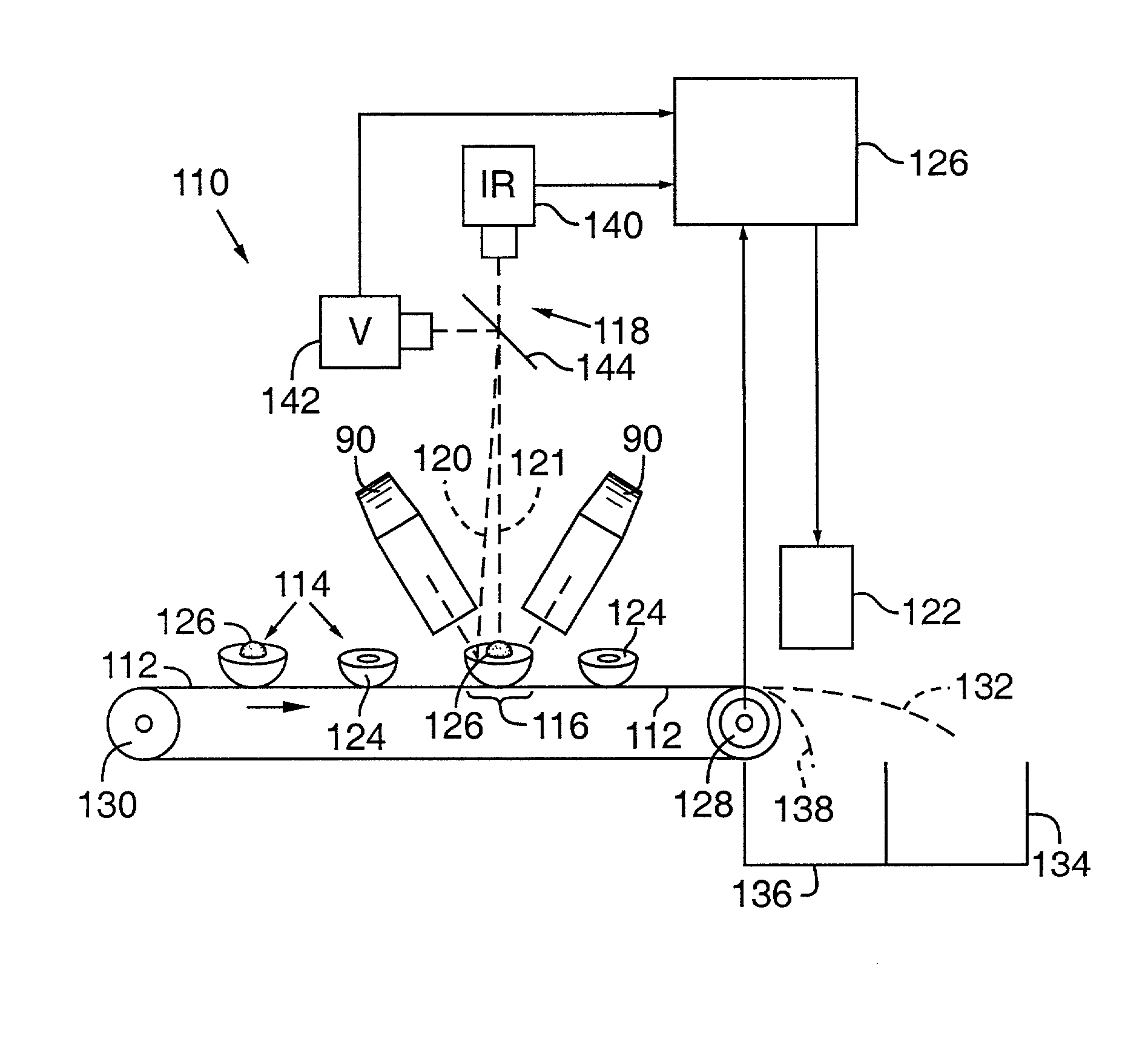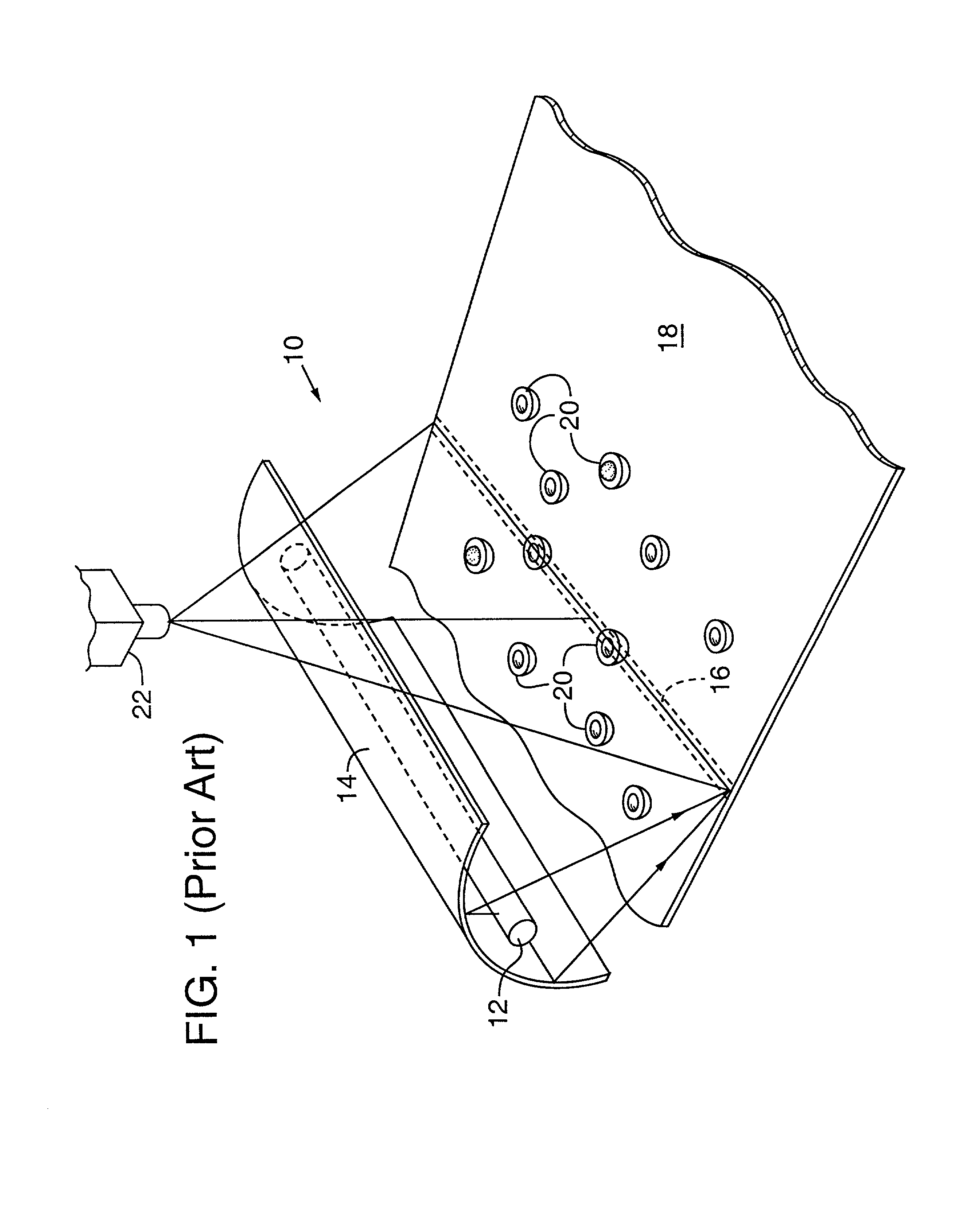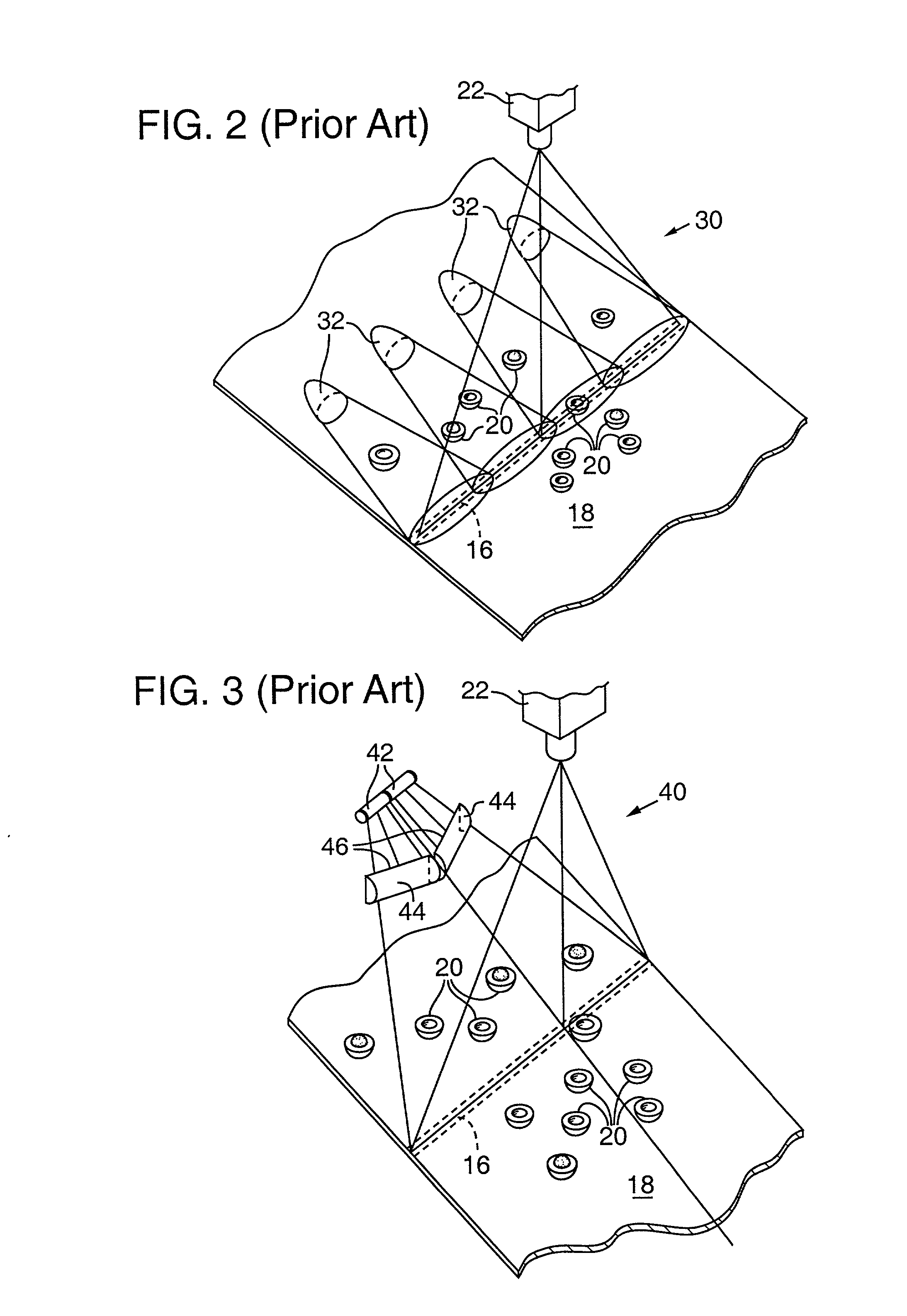[0019] A sorting
system of this invention conveys agricultural articles, such as peach halves, some of which include pits or pit fragments, on a
conveyor belt past an inspection zone that is lighted by an illumination source that radiates both visible and
infrared ("IR")
radiation. The illumination source generates numerous peaks of visible and IR
radiation over a
broad spectrum. A preferred illumination source includes a high-pressure
Indium Iodide doped
high intensity discharge lamp. The radiation is reflected off a
parabolic reflector and through a "soda
straw"
collimator to illuminated the peaches. A
detector system employs
line scanning visible and IR cameras to sense visible and IR
wavelength reflectance value differences existing between the peach meat and the peach pit or pit fragments. Because peach
flesh and peach pits exhibit a reversal in the reflectance values between the visible and IR wavelengths, an
image analysis technique, such as subtraction or division, is employed to enhance the
image contrast. The data subtraction technique also cancels "glint" caused by specular reflections of the illumination off the peaches and into the cameras. In other embodiments of this invention, the visible and
infrared image data may be processed using various other
image processing methods, such as ratioing, logarithmic, regression, combination, statistical distance, and shape determination to enhance the
image detection contrast and classify the resulting data to make sorting decisions.
[0047] A "soda
straw collimator" 100 comprises multiple walls 102 extending perpendicularly between top and bottom caps 98 and aligned parallel to projection axis 96. Walls 102 have diffuse surfaces and their length to
pitch ratio allows only light rays that are substantially parallel to projection axis 96 to exit illumination source 90, thereby virtually eliminating any shadowing that would be detrimental to detecting peach pits or pit fragments.
[0052] Illumination sources 90 of FIGS. 8 and 9 provide a stripe of illumination in inspection zone 116 having a substantially uniform intensity across the width of conveyor belt 112. The illumination system includes a pair of illumination sources 90 facing inwardly from opposite sides of inspection zone 116 to provide
detector system 118 an unobscured view of inspection zone 116 and to reduce detection errors caused by shadowing. The particular type of HID lamp 92 employed will depend on the specific reflection characteristic under analysis as described with reference to FIGS. 6 and 7. However,
Helium lamps preferably employ the prior art reflector structure shown in FIG. 1.
[0058] Subtracting the visible pixel values from the SWIR pixel values yields the following values. For reflected
ray 120 (peach meat 124), 520 mV-520 mV=0 mV. Because video levels cannot be negative, any negative values would be set to zero. For reflected
ray 121 (peach pits 126), 720 mV-180 mV=540 mV. The net result is that peach meat 124 drops out of the image and only peach pit 126 are detected. This subtraction technique drives the contrast to infinity and makes peach sorting considerably easier. By adjusting the video
gain of either the visible or SWIR cameras this effect can be enhanced or diminished.
[0070] FIG. 12 is a Polaroid photograph taken of a television monitor displaying a two-dimensionally image generated from the
video output of the SWIR camera viewing a peach with an embedded pit. The illumination source includes an Induim
Iodide arc
discharge lamp. The peach was prepared by splitting it with a knife and immersing it in a warm 12 percent
sodium hydroxide solution for 30 seconds. This preparation removes a portion of the peach flesh tendrils attached to the pit and diminishes
chlorophyll effect reflectance from the peach meat. The horizontal
white line traversing the peach and pit has been superimposed on the television monitor by a Tektronix waveform measurement system to indicate which displayed
scan line is being measured by the waveform measurement system. FIG. 12 clearly shows that the pit is substantially brighter that the surrounding peach flesh.
 Login to View More
Login to View More  Login to View More
Login to View More 


